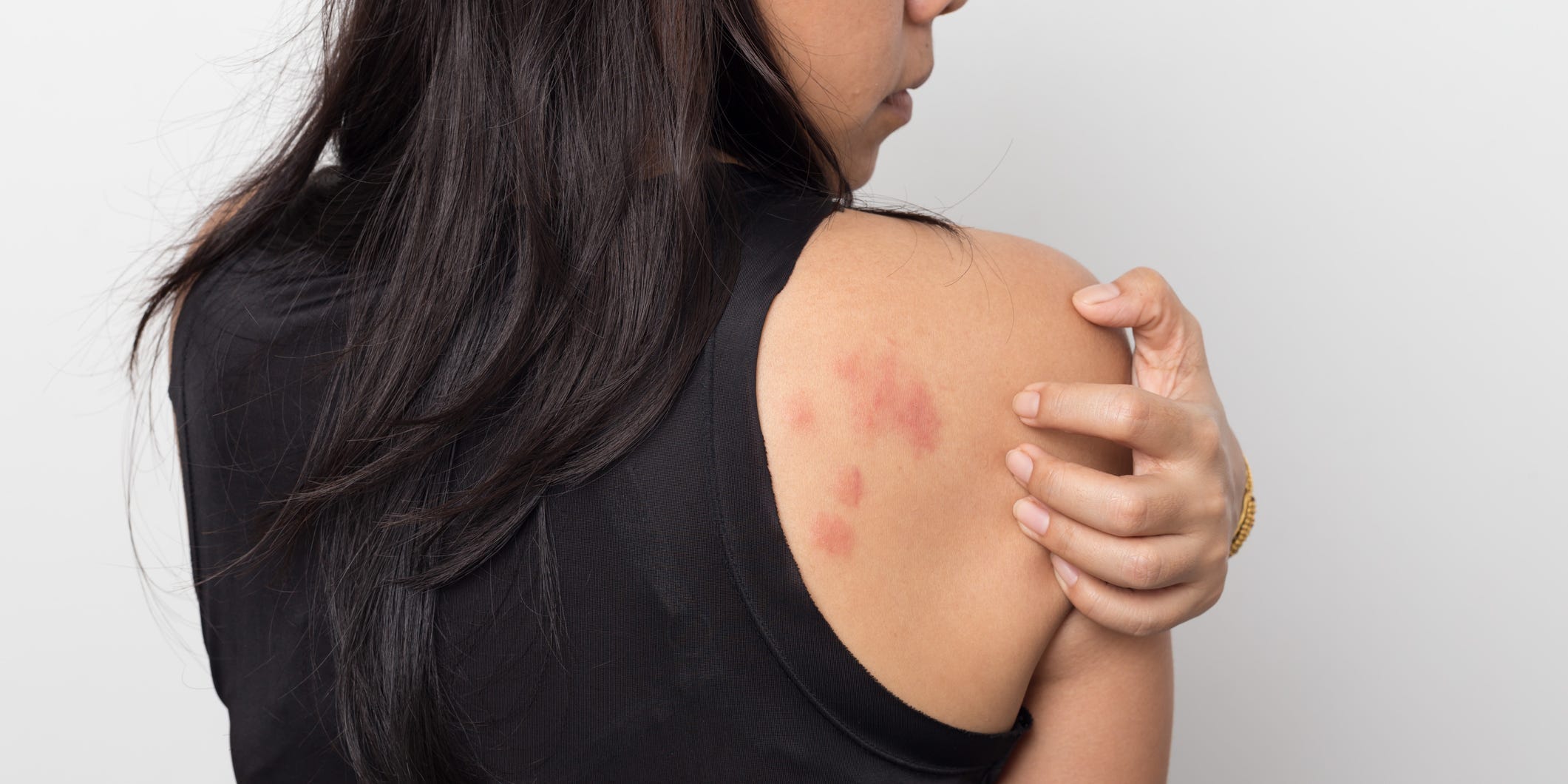
chokja/Getty Images
- A stress rash looks like raised red bumps that cluster together in large welts or tiny dots.
- Stress rashes can appear anywhere on the body from the arms and legs to the face and back.
- To treat a stress rash, take antihistamines, apply a cold compress, and try to reduce your stress.
- Visit Insider's Health Reference library for more advice.
While some people might get headaches or have difficulty sleeping when under stress, others might develop a rash.
Stress rashes are common and usually not a cause for concern, says Patrick Lee, MD, Vice-Chair in the department of dermatology and clinical professor at UCI School of Medicine. However, they can be itchy and uncomfortable.
Here's why your body might develop a rash under stress as well as how long it could last and what you can do to treat it.
What does a stress rash look like?
A stress rash usually appears as raised red bumps called hives, says Niket Sonpal, MD, adjunct assistant professor at the Touro College of Osteopathic Medicine. They can form in clusters and look like large welts or tiny dots.
Symptoms of a stress rash include:
- Itching
- Redness
- Swelling
- Blotchy skin
- A burning or tingling sensation when the rash is touched
A stress rash can occur anywhere, Lee says, but is more likely to show up in areas where your skin folds or rubs against clothing, like:
- Armpits
- On your waist where the waistband of your pants might sit
- The crease in your elbow
- Behind the knee
Because a stress rash looks similar to other types of hives, it can be difficult to self-diagnose, Lee says. However, it's most likely a stress rash if you've been experiencing a period of stress and there is no other likely cause, like allergies or illness.
In fact, a 2008 study found that short-term financial, personal, or professional stress can cause an acute form of hives that fades within a few days or weeks. But sometimes hives can persist for much longer, Sonpal says.
Hives that last longer than six weeks are considered chronic. If your hives persist for this long, consult with your doctor or a dermatologist. Chronic hives could be a sign of an underlying medical condition, like celiac disease or rheumatoid arthritis.
What causes a stress rash?
Hives occur when the body releases a compound called histamine in response to an allergen. However, stress can also trigger the release of histamine, resulting in hives, Lee says.
"The stress is often fairly significant and persistent to generate this reaction," he says.
Stress also increases your heart rate and body temperature, which can cause the skin to become inflamed and red, Lee says. These physical responses to stress can also worsen pre-existing skin conditions, like rosacea, psoriasis, or eczema.
In fact, a 2018 study examining how stress affects the skin of medical students found those who reported the highest levels of stress also showed a variety of skin symptoms, including dandruff, pimples, hair loss, and itchy skin. Of the 1,435 participants, 40% reported experiencing itchy skin and rashes.
How to get rid of a stress rash
Stress hives often resolve on their own within a few days, Lee says, but they can persist if your stress level remains high. Reducing stress by meditating, deep breathing, or exercising can help your body relax and heal the hives.
Here are some other ways to treat a stress rash and relieve itching, swelling, and pain:
- Take over-the-counter oral antihistamines, like Benadryl or Claritin.
- Apply over-the-counter topical cortisones, like hydrocortisone.
- Ask your doctor about a prescription topical steroid.
- Place a cool compress over the hives or take a cool bath.
- Gently rub aloe vera on your hives. Aloe vera contains anti-inflammatory properties that can help ease itching and soothe skin.
Insider's takeaway
A stress rash usually appears as hives. It can show up anywhere on the body and may itch or swell.
Practicing stress management through activities like meditation or exercise is the first line of defense against a stress rash. Beyond that, you can ease discomfort from a stress rash with over-the-counter antihistamines or topical steroids.
If your hives persist for more than six weeks, consult with your doctor who may be able to prescribe medication or determine if your hives are due to an underlying medical condition like celiac disease or rheumatoid arthritis.
Additionally, if they are accompanied by nausea or diarrhea, seek immediate medical attention as it could be an allergic reaction.
